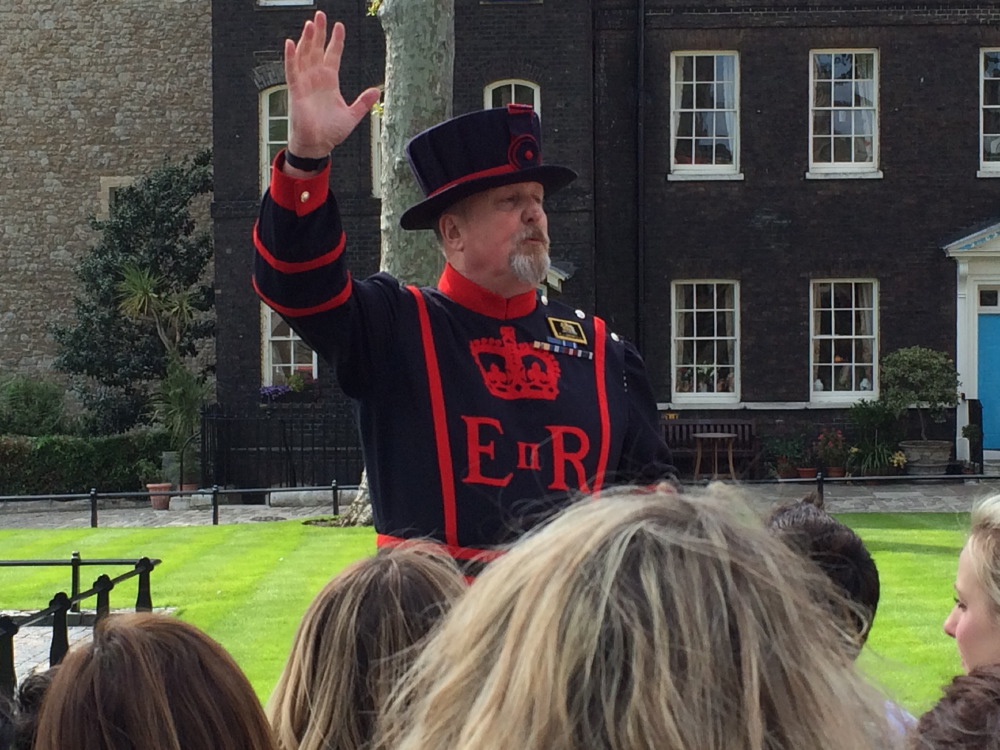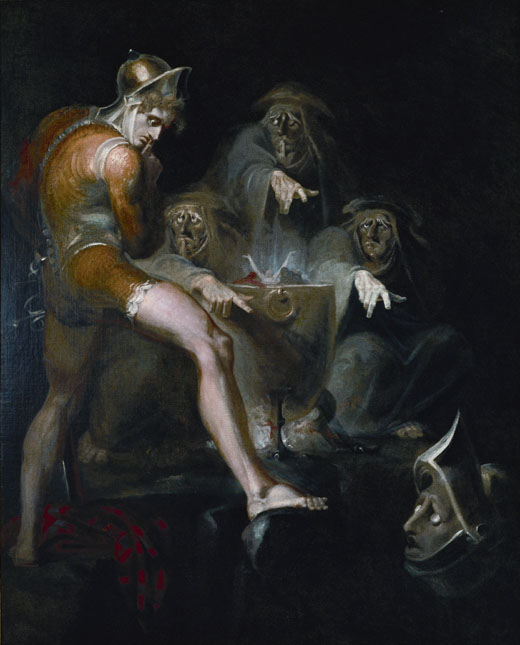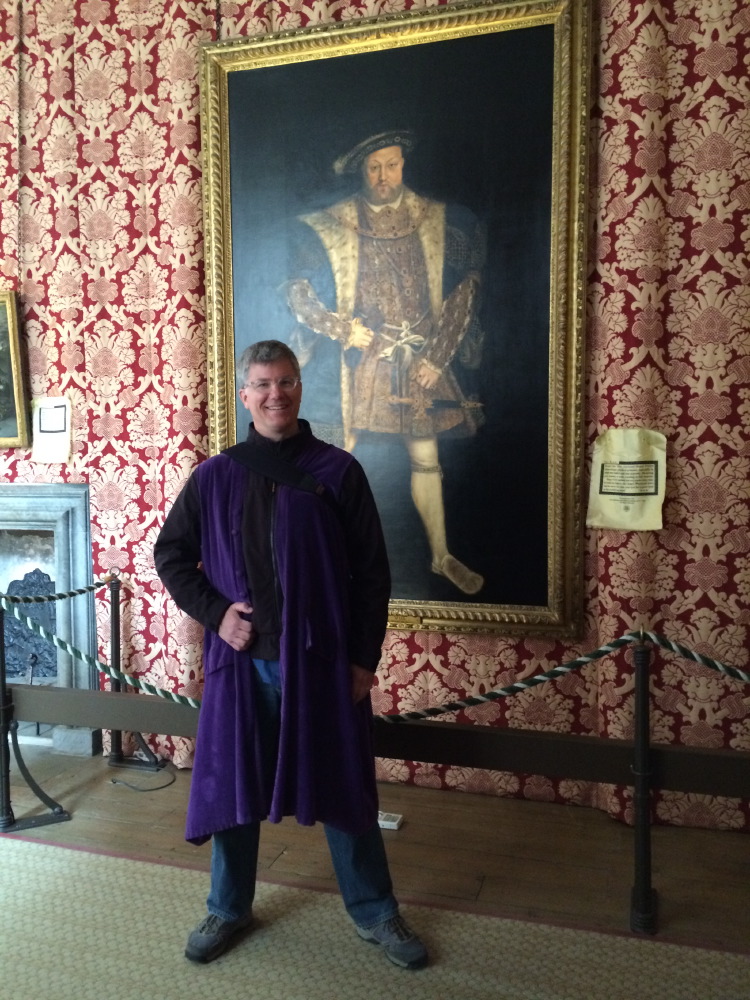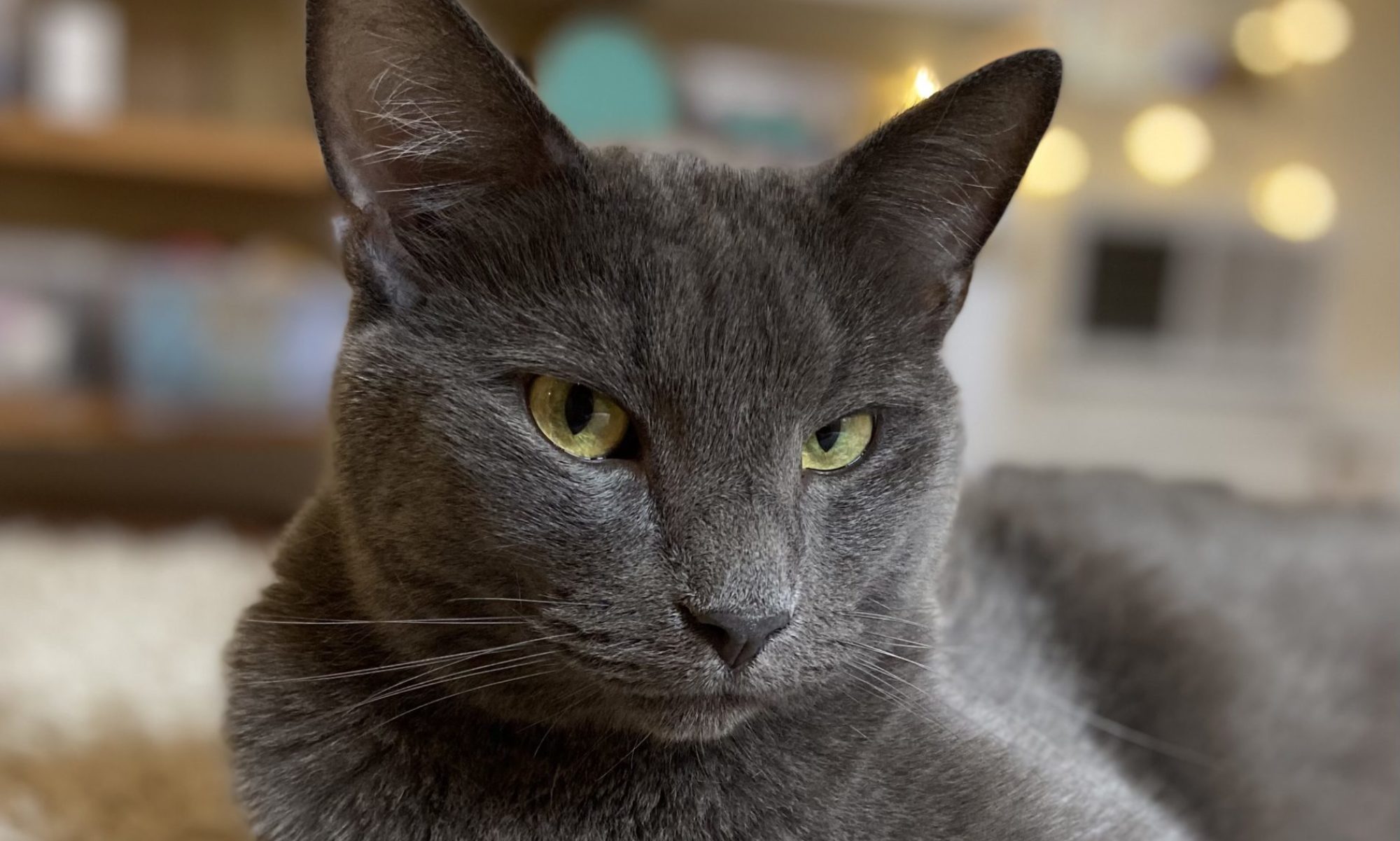This post is the eighth in our “England 2015”:/news/category/travel/england-2015/ series.
As we readied our minds for the trip, I became excited about studying English history with the girls — until I was blindsided by the quantity of bloodshed and decapitation in the available narratives.

Rob the Yeoman Warder at the Tower of London enjoyed proclaiming vivid and gory details throughout the tour.
Our girls tend to be particularly sensitive, but I cannot always predict what will set them off. I have learned that anything involving harm to animals is “pretty intolerable to Rosie”:/news/2015/life-lessons-through-literature-grieving-a-raccoon/. Lucy easily dismisses some terrifying things, like the Rancor in Return of the Jedi. But then she’ll end up with nighttime frights over others — such as this dark painting of the three witches from Macbeth that we glimpsed at the Art Institute a few months ago:

Macbeth consulting the Vision of the Armed Head by “Henry Fuseli”:https://en.wikipedia.org/wiki/Henry_Fuseli (1793).
As much as I see the worth in allowing the children to grow strong through encounters with the world, I value my own sleep more — and so I tend screen media as much as I can, not necessarily in an effort to shield the girls from exposure, but to at least give them a fair warning before encountering it. As a sensitive person myself, I appreciate the opportunity to make an informed decision before reading or watching something heart-wrenching. I hope to train our girls to make good choices about their own media consumption.
But for now, I’m in the business of screening, and alarm bells were going off as we got into the history of England. Even in Our Island Story by H. E. Marshall, a history book designed for children, it seemed that violent acts accompanied most vignettes. I found myself previewing each story before reading it aloud, often prefacing a particularly gruesome part with, “This is kind of gross. Do you want me to read it?” Sometimes I would just give a summary. But good heavens, there is a lot of violence in English history!

I tried to convince Jon to pose as King Henry VIII at Hampton Court Palace. There’s something about his sweet smile that doesn’t quite sell it…
Of course, the violence exists in American history, too. However, in my own elementary-school studies, our nation’s history was generally sanitized. It wasn’t until I read Howard Zinn’s A People’s History of the United States in my twenties that I learned about things like the true cruelty involved in a tar-and-feathering incident or the gifts of small-pox-infected blankets to Native American tribes as a form of genocide.
But it seems that the English don’t have such qualms about their history. Indeed, the stories of Henry VIII systematically murdering his wives ends up being more of a juicy anecdote than a horrific tale. It gave me a little more insight into the dark side of English humor, helping me to get another layer of funny in the “It’s just a flesh wound” bit from Monty Python and the Holy Grail.
I braced myself in particular for our visit to the Tower of London, even though we had already determined that we would skip the torture exhibit and focus on the Crown Jewels. But when our knowledgeable docent, Rob the Yeoman Warder, prattled on about beheadings and torture and royal succession, I began to get somewhat nervous. Would the girls have nightmares about this? As usual, I needn’t have worried. Maybe it sailed over their heads in a fog of jet-lag, or maybe they just couldn’t understand Rob’s accent, but there were no ill-effects from the tour.
Just the other day, I asked the girls, “How did you feel about learning about all of the heads getting chopped off when we were studying English history?”
“Oh, that was no problem,” said Lucy. “It wasn’t nearly as scary as learning about the tongues getting pulled out.” Oh dear — that line slipped through when we were learning about the Assyrian kings living in Ninevah around 700 B.C. Just another example of my own fallibility in softening the impact of the world on our girls. What doesn’t kill them will make them stronger!

Rob the Yeoman Warder shows his softer side next to the Boyds.
Read the next post in our “England 2015”:/news/category/travel/england-2015/ series: Touring the Playgrounds: Frolicking our way through England’s jungle gyms.

